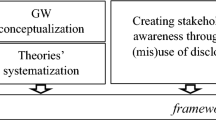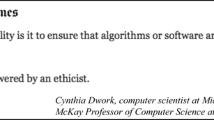Abstract
With multiple advances in innovative technologies and crowdfunding platforms for businesses, the process of crowdsourcing is associated with some security issues that are rather difficult to assess at the stage of project preparation. Security and privacy issues of applying crowdsourcing to mobile app-related projects are an important matter to discuss and pose an assessment challenge. This work offers an approach that allows assessing project safety based on a range of fairly general criteria. The meta-analysis touches upon factors affecting the level of responsibility for intellectual property rights protection, with were screened from various reports on completed crowdsourcing campaigns. Based on the results of meta-analysis, criteria for assessing security and interests of various parties in the crowdsourcing campaign were established. These criteria allow evaluating both the project success and the protection of the rights of participants in the project, including ethical and legal consequences. It can be concluded that even the most ordinary member of the “crowd” can make a contribution to the success of crowdfunding and crowdsourcing projects. In our opinion, it is being on the ethical side of crowdsourcing what ensures the success of the crowdsourcing projects. This approach is crucial to the understanding of how mobile crowdfunding app producers should ensure privacy and responsibility of each member of the “crowd” involved in any crowdfunding campaign.


Similar content being viewed by others
Data Availability
Data will be available on request.
Change history
05 January 2024
This article has been retracted. Please see the Retraction Notice for more detail: https://doi.org/10.1007/s12083-024-01625-x
References
Zhong S, Zhong H, Huang X, Yang P, Shi J, Xie L, Wang K (2019) Connecting human to cyber-world: Security and privacy issues in mobile crowdsourcing networks. In: Security and Privacy for Next-Generation Wireless Networks, pp. 65–100. Springer, Cham
Bulat MP, Bulat PV (2013) The history of the gas bearings theory development. World Applied Sci J 27(7):893–897
Allon G, Babich V (2020) Crowdsourcing and Crowdfunding in the manufacturing and services sectors. Manuf Serv Oper Manag 22(1):102–112
de Beer J, McCarthy IP, Soliman A, Treen E (2017) Click here to agree: managing intellectual property when crowdsourcing solutions. Bus Horiz 60(2):207–217
Pollok P, Lüttgens D, Piller FT (2018) How firms develop capabilities for crowdsourcing to increase open innovation performance: the interplay between organizational roles and knowledge processes. J Prod Innov Manag 36(4):412–441
Shilton K, Greene D (2019) Linking platforms, practices, and developer ethics: levers for privacy discourse in mobile application development. J Bus Ethics 155(1):131–146
Benchoufi M, Young B, Ghosn L, Ravaud P, Boutron I (2019) A scoping review provided a framework for new ways of doing research through mobilizing collective intelligence. J Clin Epidemiol 110:1
Mazzola E, Acur N, Piazza M, Perrone G (2018) To own or not to own? A study on the determinants and consequences of alternative intellectual property rights arrangements in crowdsourcing for innovation contests. J Prod Innovat Manag 35(6):908–929
Shilton K, Martin KE (2018) Mobile privacy expectations. The Cambridge Handbook of Consumer Privacy
Ferdinand JP, Meyer U (2017) The social dynamics of heterogeneous innovation ecosystems: effects of openness on community–firm relations. Int J Eng Bus Manag 9:1847979017721617
Brusoni S, Vaccaro A (2017) Ethics, technology and organizational innovation. J Bus Ethics 143(2):223–226
Godin VV, Terekhova AE (2019) Digital advertising as a tool to promote goods or services. Project implementation experience E-Management 2(3):13–21
Yang M (2019) Research on intellectual property rights of electronic commerce from the perspective of big data. In: 2018 international symposium on social science and management innovation (SSMI 2018), Atlantis Press
Nevo D, Kotlarsky J (2020) Crowdsourcing as a strategic is sourcing phenomenon: Critical review and insights for future research. J. Strategic Inf. Syst. 101593
Tekic A, Willoughby KW (2020) Configuring intellectual property management strategies in co-creation: a contextual perspective. Innovation 22(2):128–159
Schulze W, Zellweger TM (2020) Property rights, owner-management, and value creation. Acad Manag Rev
de Beer J Open innovation in development: integrating theory and practice across open science, open education, and open data
Lopez-Vega H, Tell F, Vanhaverbeke W (2016) Where and how to search? Search paths in open innovation. Res Policy 45(1):125–136
Alghamdi FA (2018) An Integrated Cloud model for intelligent E-Learning system. Int J Appl Eng Res 13(14):11484–11490
Zkik K, Orhanou G, El Hajji S (2017) Secure mobile multi cloud architecture for authentication and data storage. IJCAC 7(2):62–76
Natalicchio A, Petruzzelli AM, Garavelli AC (2017) Innovation problems and search for solutions in crowdsourcing platforms–a simulation approach. Technovation 64:28–42
Ghezzi A, Gabelloni D, Martini A, Natalicchio A (2018) Crowdsourcing: a review and suggestions for future research. Int J Manag Rev 20(2):343–363
Dahlander L, Jeppesen LB, Piezunka H (2019) How Organizations Manage Crowds: Define, Broadcast, Attract, and Select. In: Sydow, J., Berends, H. (eds.) Managing Inter-organizational Collaborations: Process Views, pp. 239–270. Emerald Publishing Limited
Vanacker T, Vismara S, Walthoff-Borm X (2019) What happens after a crowdfunding campaign?. In: Handbook of Research on Crowdfunding. Edward Elgar Publishing
Chanal V, Caron-Fasan ML (2010) The difficulties involved in developing business models open to innovation communities: the case of a crowdsourcing platform. Management 13(4):318–340
Stol K-J, Fitzgerald B (2014) Two’s company, three's a crowd: a case study of crowdsourcing software development. In: Proceedings of the 36th International Conference on Software Engineering. ACM
Saldanha FP, Cohendet P, Pozzebon M (2014) Challenging the stage-gate model in crowdsourcing: The case of Fiat Mio in Brazil. Technol. Innov. Manag. Rev. 4(9)
Bartl M, Jawecki G, Wiegandt P (2010) Co-creation in new product development: conceptual framework and application in the automotive industry. Conference Proceedings R&D Management Conference–Information, Imagination and Intelligence (vol. 9). Manchester
Althoff T, Leskovec J (2015) Donor retention in online crowdfunding communities: A case study of donorschoose. org. Proceedings of the 24th international conference on world wide web. International World Wide Web Conferences Steering Committee
Aitamurto T (2011) The impact of crowdfunding on journalism: Case study of Spot. Us, a platform for community-funded reporting. Journal. Pract 5(4):429–445
Geiger M (2020) A meta-analysis of the gender gap (s) in venture funding: funder-and entrepreneur-driven perspectives. J Bus Ventur Insights 13:e00167
Salhieh SEM (2019) Modeling the rationality of customers’ switching mobile services behavior. Int. J. Eng. Bus. Manag. 11:1847979019865411
Rodriguez AS, Campdesuñer RP, Vidal GG, Vivar RM (2017) Tools for measuring and improving external customer satisfaction in stores of Santo Domingo. Ecuador Int J Eng Bus Manag 9:1847979017723172
Schenk E, Guittard C, Pénin J (2019) Open or proprietary? Choosing the right crowdsourcing platform for innovation. Technol Forecast Soc Change 144:303–310
Meoli A, Munari F, Bort J (2019) The patent paradox in crowdfunding: an empirical analysis of Kickstarter data. Ind Corp Change 28(5):1321–1341
Foege JN, Lauritzen GD, Tietze F, Salge TO (2019) Reconceptualizing the paradox of openness: how solvers navigate sharing-protecting tensions in crowdsourcing. Res Policy 48(6):1323–1339
Kelemen M, Kozuba J (2019) Technology improving safety of Crowdfunding platforms functioning in the context of the protection of the start-up Investors in the Financial and Transport Sectors
Gómez AA, Caro MF, Solano AM, Vega YM (2018) Trends of educational informatics in Latin America. IJSSCI 10(1):80–87
Schäfer S, Antons D, Lüttgens D, Piller F, Salge TO (2017) Talk to your crowd: principles for effective communication in crowdsourcing a few key principles for communicating with solvers can help contest sponsors maintain and grow their base of participants. Res Technol Manage 60(4):33–42
Acknowledgments
Zhijiang Liu was supported by Scientific Research Funding Project of ZhuJiang - XiJiang Economic Belt Development Research Institute in GuangXi Normal University; Ali Research’s 2020 “Huoshui” Young Academics Project; Guangxi Natural Science foundation in 2020.
Author information
Authors and Affiliations
Corresponding author
Ethics declarations
Conflict of interests
Authors declare that they have no conflict of interests.
Additional information
Publisher’s note
Springer Nature remains neutral with regard to jurisdictional claims in published maps and institutional affiliations.
This article is part of the Topical Collection: Special Issue on Security of Mobile, Peer-to-peer and Pervasive Services in the Cloud
This article is part of the Topical Collection: Special Issue on Security of Mobile, Peer-to-peer and Pervasive Services in the Cloud
Guest Editors: B. B. Gupta, Dharma P. Agrawal, Nadia Nedjah, Gregorio Martinez Perez, and Deepak Gupta
This article has been retracted. Please see the retraction notice for more detail: https://doi.org/10.1007/s12083-024-01625-x
Rights and permissions
Springer Nature or its licensor (e.g. a society or other partner) holds exclusive rights to this article under a publishing agreement with the author(s) or other rightsholder(s); author self-archiving of the accepted manuscript version of this article is solely governed by the terms of such publishing agreement and applicable law.
About this article
Cite this article
Liu, Z., Shestak, V. RETRACTED ARTICLE: Issues of crowdsourcing and mobile app development through the intellectual property protection of third parties. Peer-to-Peer Netw. Appl. 14, 2618–2625 (2021). https://doi.org/10.1007/s12083-020-00976-5
Received:
Accepted:
Published:
Issue Date:
DOI: https://doi.org/10.1007/s12083-020-00976-5




